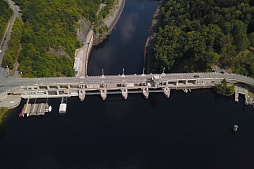Compound feed plants: lending and project finance
ESFC Investment Group offers:
• Investment financing from €50 million and more
• Minimizing the contribution of the project promoter
• Investment loan term up to 20 years
• Loan guarantees
Energy consumption and environmental indicators are becoming important issues for the industry, which requires the improvement of production processes.
Large investments in the construction or modernization of feed mills are aimed at increasing production volumes, reducing the cost of the finished product, improving quality and environmental performance.
High-quality feed (roughages, concentrates, mixed feeds) has a positive effect on the growth of the daily weight gain of animals, and therefore on reducing the cost of their maintenance, which sharply increases the profitability of agriculture.
Therefore, increasing the production of high-quality compound feed for agricultural farms specializing in the cultivation of poultry, cattle and pigs is an important business task. Advanced technologies and engineering solutions can cost tens of millions of euros, requiring the search for reliable partners and external sources of long-term capital.
In addition to traditional lending, agribusiness is actively using other instruments for financing compound feed plants, including off-balance sheet project finance, leasing, issuing bonds, etc.
The right choice of a financial model and the rational use of advanced financial engineering tools allow our clients to achieve business goals with a minimum risk and lowest debt servicing costs.
ESFC Investment Group, a European company with rich experience in project financing, can provide you with a solid financial footing for new business ideas.
We provide project finance (PF) services, long-term investment loans, loan guarantees, as well as financial modeling and consulting services.
The role of project finance in compound feed plant projects
Project finance is a specialized funding mechanism that proves invaluable in the development of modern compound feed plant projects. By isolating financial risks, optimizing capital structure, and aligning debt with cash flows, PF is a basis for the growth and viability of these projects.Below we explain the main practical advantages of project finance schemes in the feed industry.
Risk mitigation
Firstly, it is important to consider ring-fencing project risks. Project finance involves creating a distinct legal and financial structure for the compound feed plant project. This ensures that some risks associated with the project, such as construction delays or regulatory changes, do not jeopardize the overall financial health of the parent company.Secondly, it is about credit enhancement mechanisms. Lenders often employ credit enhancement mechanisms, such as guarantees or insurance, to mitigate risks. This provides an “added layer” of security for financiers, making the project more attractive and potentially lowering financing costs.
Customized financing structures
Project finance allows for the creation of debt structures tailored to the specific needs of particular project. This might include flexible repayment schedules, grace periods during all the construction phase, and bullet repayments aligned with the plant's expected cash flow patterns.Project finance also involves a careful balance of equity / debt. Investors contribute equity to the project, aligning their interests with the successful execution and profitability of the venture. This equity cushion provides a buffer against unexpected challenges.
Cash flow management
Project finance employs a cash flow waterfall mechanism, dictating the order in which cash flows are distributed. Debt service, operating expenses, and equity returns are prioritized in a structured manner, ensuring that commitments are met without compromising the project's financial health.Debt repayment is directly linked to the investment project's future cash flows. This alignment ensures that project debt servicing is sustainable and manageable, especially during the initial phases when the industrial facility may be ramping up production.
Environmental and social considerations
Project finance for compound feed plants increasingly considers environmental, social, and governance (ESG) criteria. Lenders and investors may incentivize or provide preferential terms for projects that adhere to sustainable practices, fostering more environmentally conscious operations.Robust project finance structures often incorporate thorough comprehensive assessments, ensuring that the compound feed plant adheres to environmental standards. This not only aligns with global sustainability goals but also mitigates potential reputational and regulatory risks.
Reliable contractual protections
Firstly, PF usually means powerful legal frameworks. Modern project finance schemes rely on robust legal agreements to protect the interests of all participants. Comprehensive contracts define the rights and responsibilities of lenders, investors, and project sponsors, providing framework that ensures project transparency and accountability.Secondly, the introduction of project finance mechanisms favors contingency planning. Well-structured project finance agreements often include contingency planning mechanisms. These may involve financial reserves or contractual clauses that address unforeseen circumstances, offering a level of flexibility crucial for navigating complex projects.
In the international practice of compound feed plant projects development, project finance emerges as a strategic enabler of growth and sustainability.
By effectively managing risks, customizing financial structures, aligning debt with cash flows, and addressing environmental considerations, project finance becomes a catalyst for business success in this area.





















